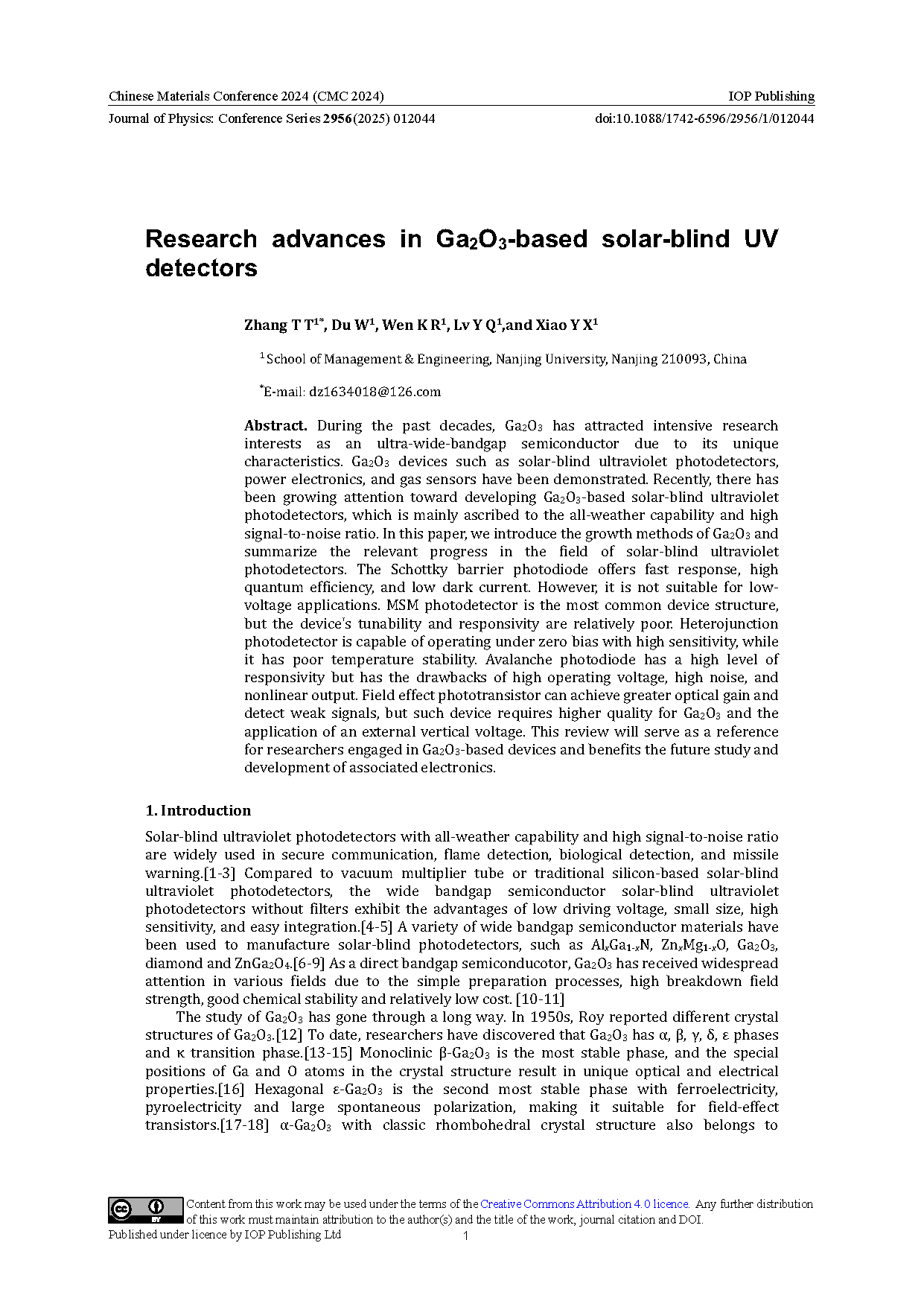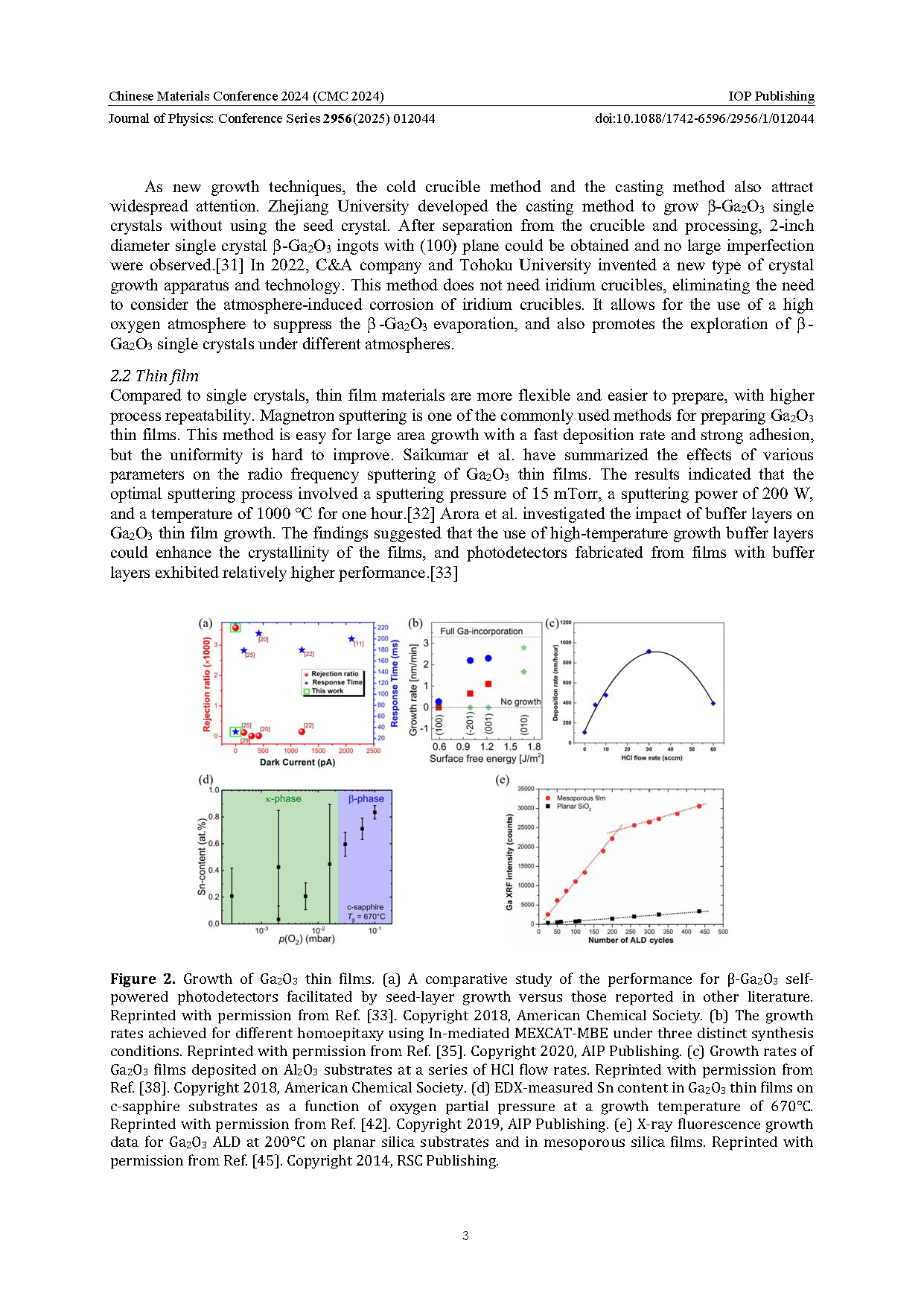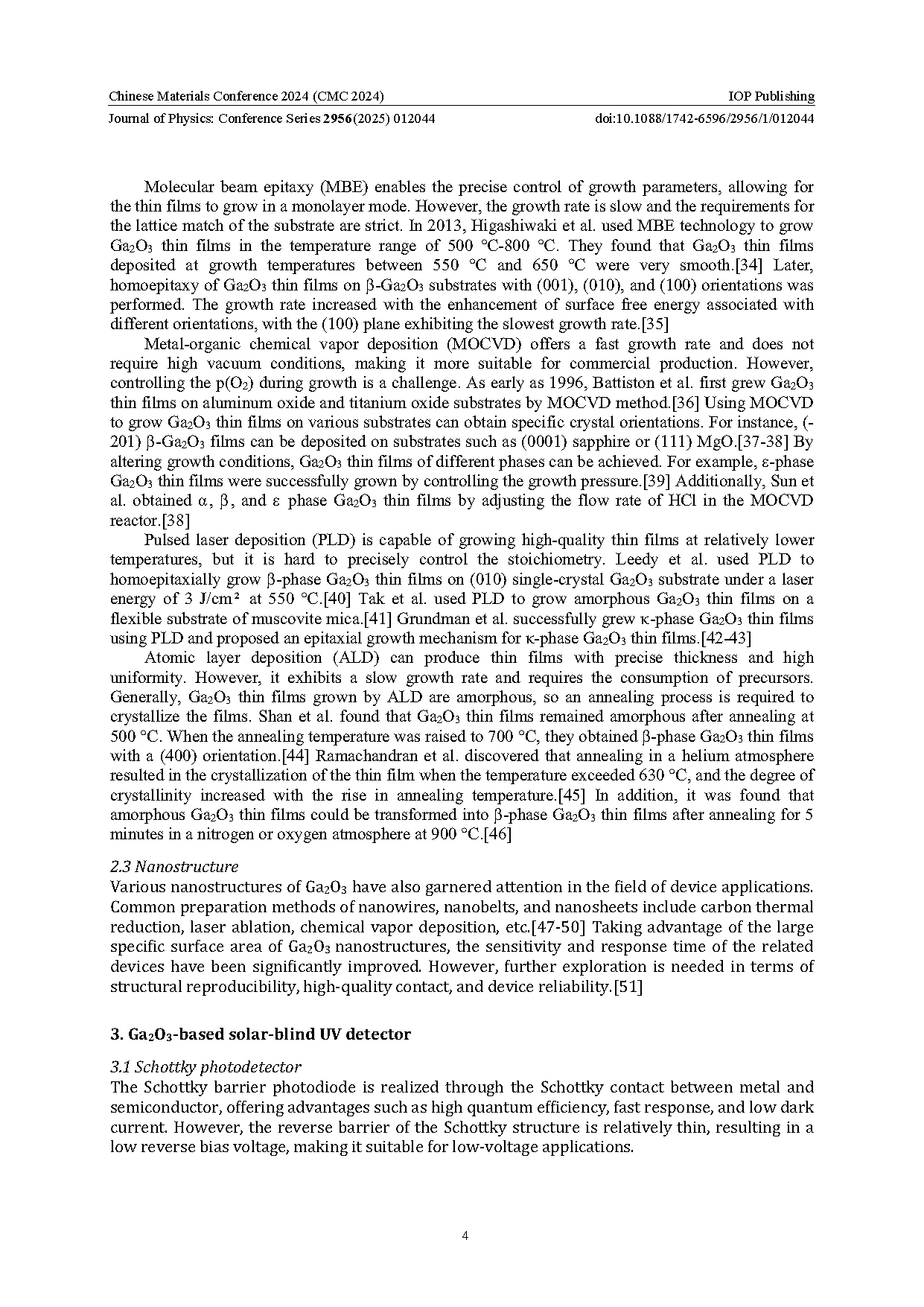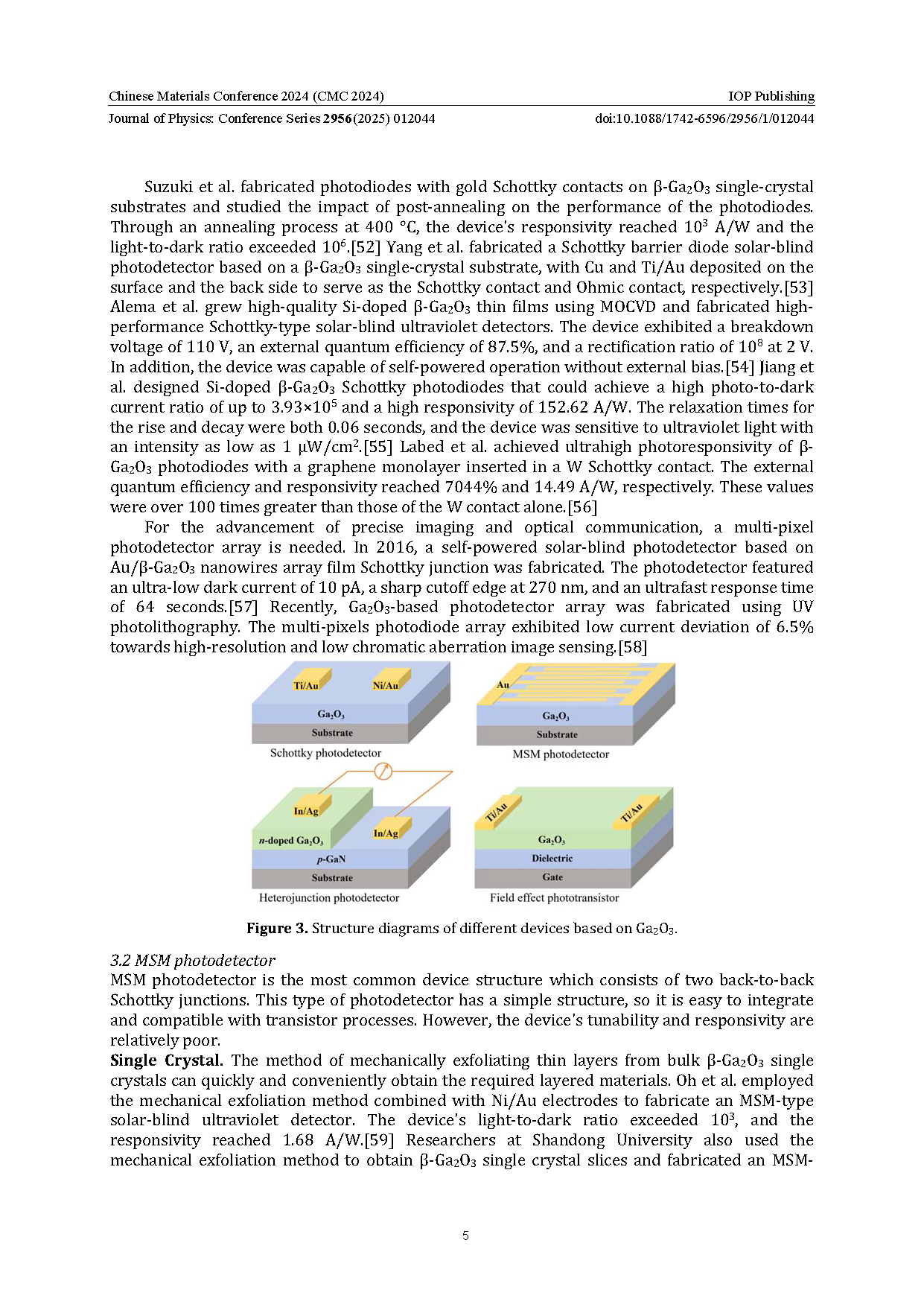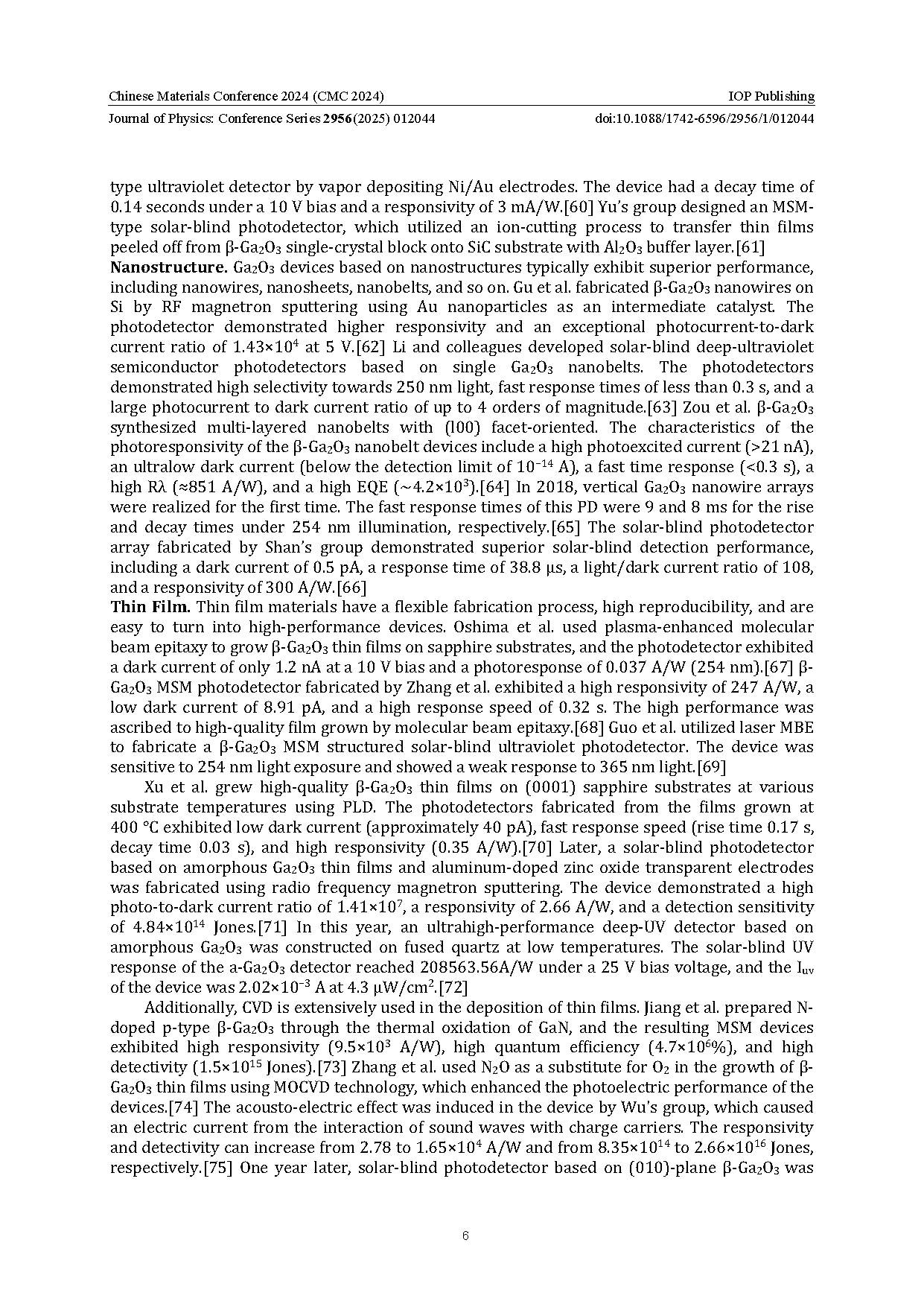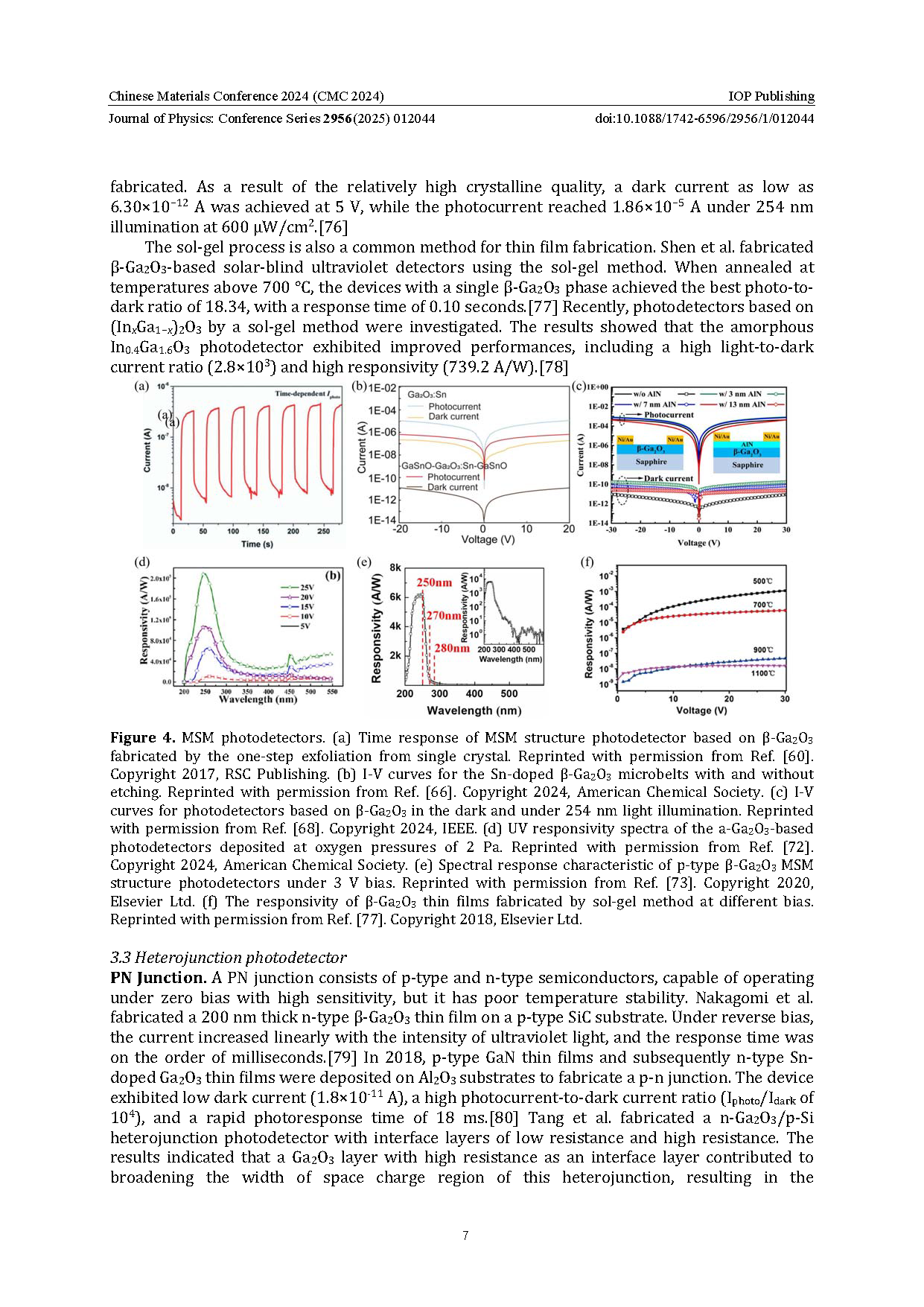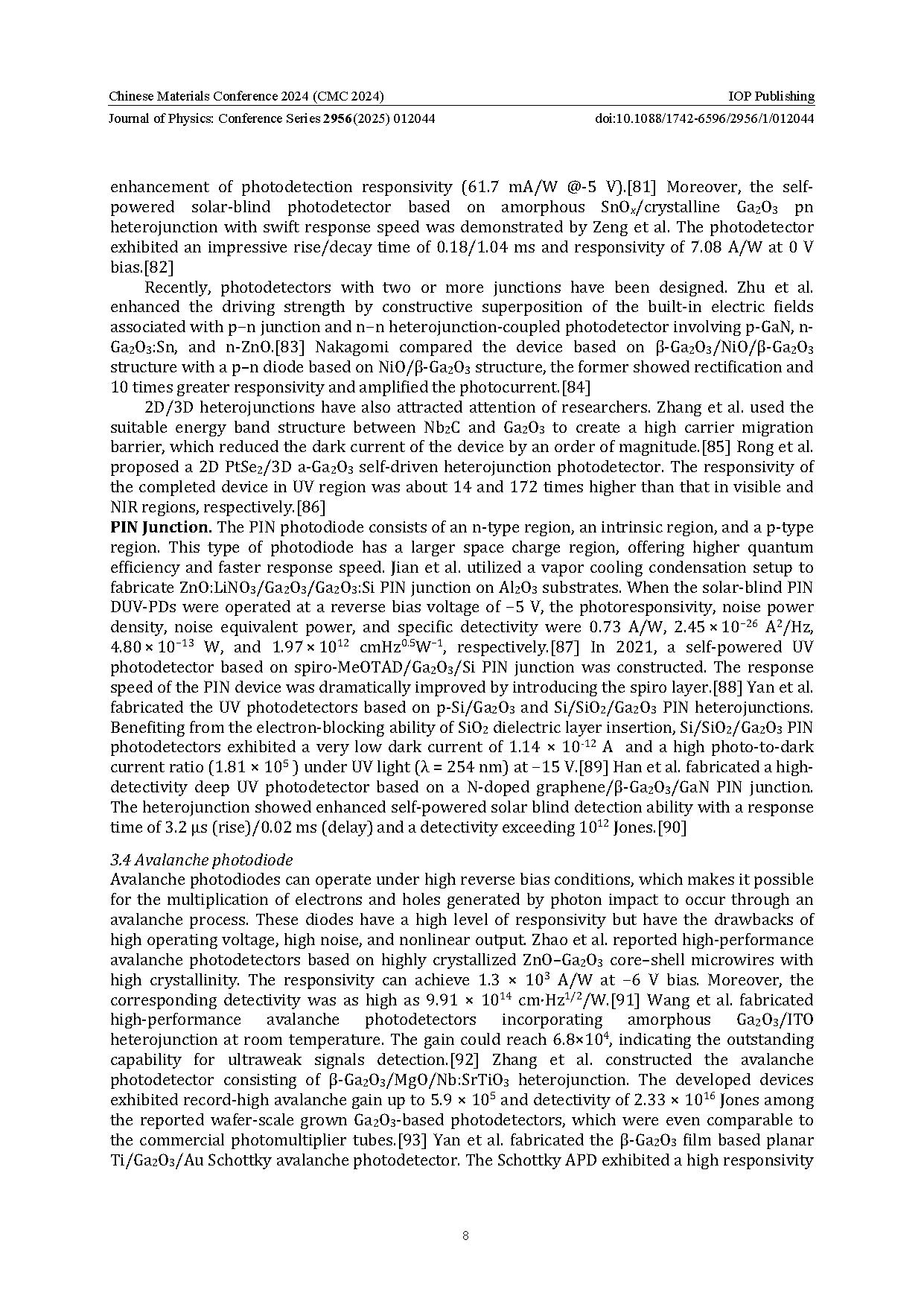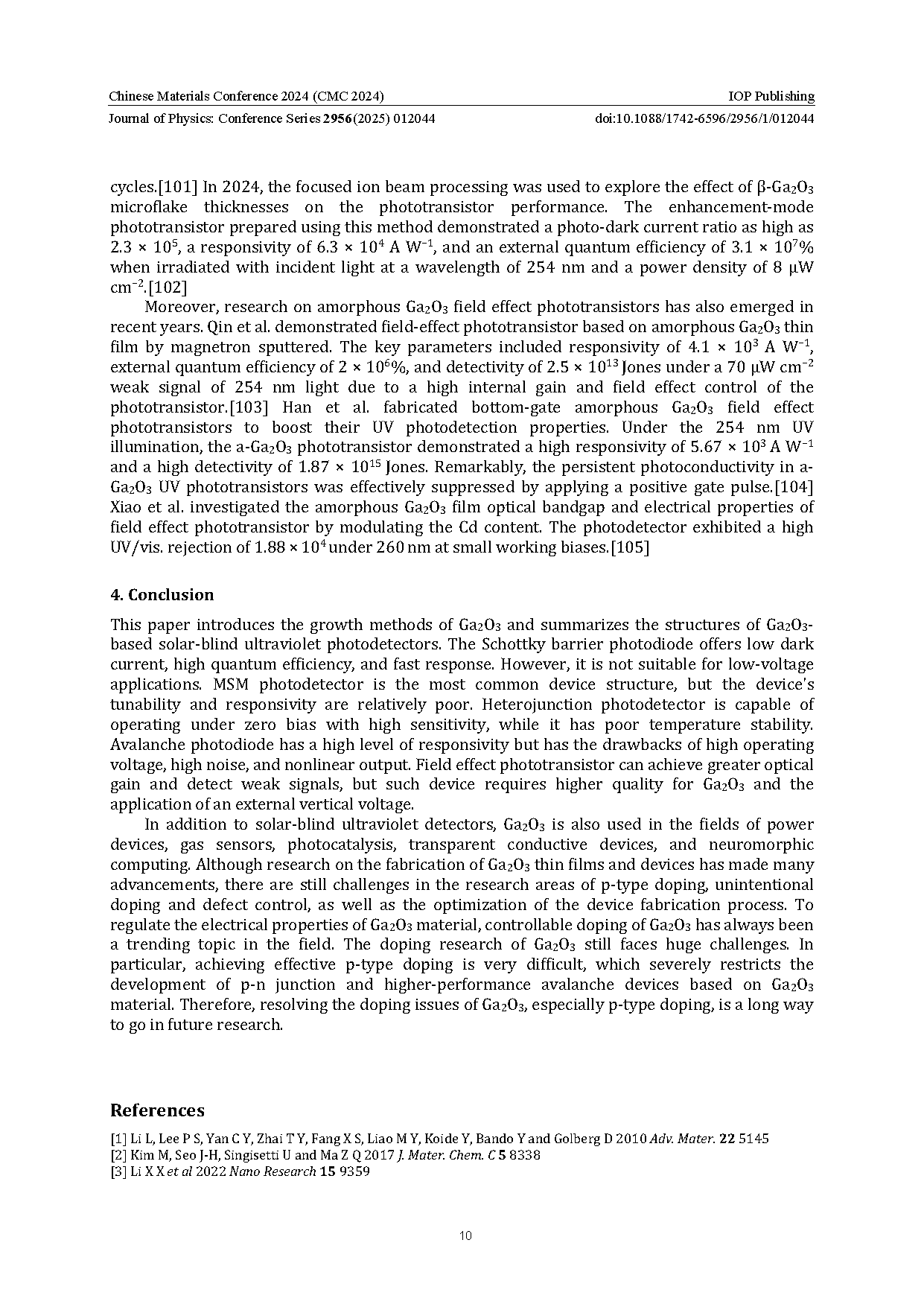
【Domestic Papers】Nanjing University---Research advances in Ga₂O₃-based solar-blind UV detectors
日期:2025-05-08阅读:363
Researchers from the Nanjing University have published a dissertation titled "Research advances in Ga2O3-based solar-blind UV detectors" in Journal of Physics: Conference Series.
Background
Solar-blind ultraviolet photodetectors with all-weather capability and high signal-to-noise ratio are widely used in secure communication, flame detection, biological detection, and missile warning. Compared to vacuum multiplier tube or traditional silicon-based solar-blind ultraviolet photodetectors, the wide bandgap semiconductor solar-blind ultraviolet photodetectors without filters exhibit the advantages of low driving voltage, small size, high sensitivity, and easy integration. A variety of wide bandgap semiconductor materials have been used to manufacture solar-blind photodetectors, such as AlxGa1-xN, ZnxMg1-xO, Ga2O3, diamond and ZnGa2O4. As a direct bandgap semiconducotor, Ga2O3 has received widespread attention in various fields due to the simple preparation processes, high breakdown field strength, good chemical stability and relatively low cost.
Abstract
During the past decades, Ga2O3 has attracted intensive research interests as an ultra-wide-bandgap semiconductor due to its unique characteristics. Ga2O3 devices such as solar-blind ultraviolet photodetectors, power electronics, and gas sensors have been demonstrated. Recently, there has been growing attention toward developing Ga2O3-based solar-blind ultraviolet photodetectors, which is mainly ascribed to the all-weather capability and high signal-to-noise ratio. In this paper, we introduce the growth methods of Ga2O3 and summarize the relevant progress in the field of solar-blind ultraviolet photodetectors. The Schottky barrier photodiode offers fast response, high quantum efficiency, and low dark current. However, it is not suitable for lowvoltage applications. MSM photodetector is the most common device structure, but the device's tunability and responsivity are relatively poor. Heterojunction photodetector is capable of operating under zero bias with high sensitivity, while it has poor temperature stability. Avalanche photodiode has a high level of responsivity but has the drawbacks of high operating voltage, high noise, and nonlinear output. Field effect phototransistor can achieve greater optical gain and detect weak signals, but such device requires higher quality for Ga2O3 and the application of an external vertical voltage. This review will serve as a reference for researchers engaged in Ga2O3-based devices and benefits the future study and development of associated electronics.
Condusion
This paper introduces the growth methods of Ga2O3 and summarizes the structures of Ga2O3-based solar-blind ultraviolet photodetectors. The Schottky barrier photodiode offers low dark current, high quantum efficiency, and fast response. However, it is not suitable for low-voltage applications. MSM photodetector is the most common device structure, but the device's tunability and responsivity are relatively poor. Heterojunction photodetector is capable of operating under zero bias with high sensitivity, while it has poor temperature stability. Avalanche photodiode has a high level of responsivity but has the drawbacks of high operating voltage, high noise, and nonlinear output, Field effect phototransistor can achieve greater optical gain and detect weak signals, but such device requires higher quality for Ga2O3 and the application of an external vertical voltage.
In addition to solar-blind ultraviolet detectors, Ga2O3 is also used in the fields of power devices, gas sensors, photocatalysis, transparent conductive devices, and neuromorphic computing. Although research on the fabrication of Ga2O3 thin films and devices has made many advancements, there are still challenges in the research areas of p-type doping, unintentional doping and defect control, as well as the optimization of the device fabrication process. To regulate the electrical properties of Ga2O3 material, controllable doping of Ga2O3 has always been a trending topic in the field. The doping research of Ga2O3 still faces huge challenges. In particular, achieving effective p-type doping is very difficult, which severely restricts the development of p-n junction and higher-performance avalanche devices based on Ga2O3 material. Therefore, resolving the doping issues of Ga2O3, especially p-type doping, is a long way to go in future research.
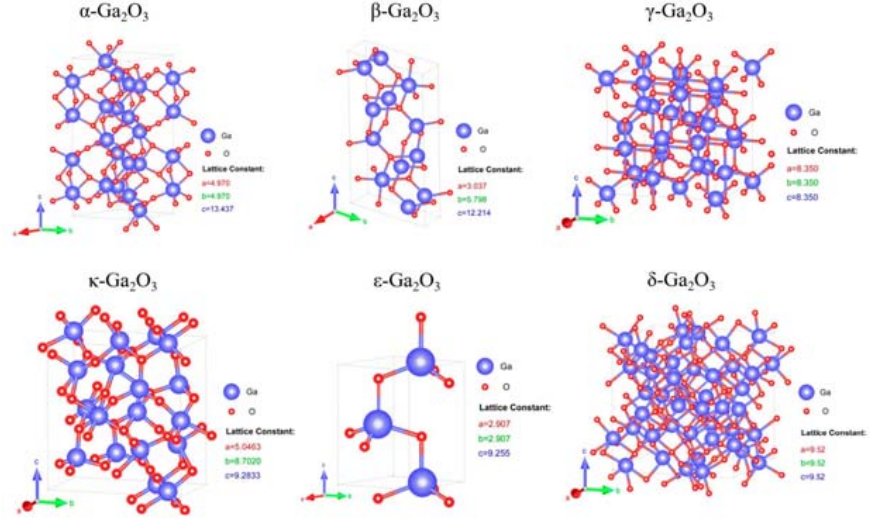
Figure 1. Specific structures of six phases for Ga2O3.
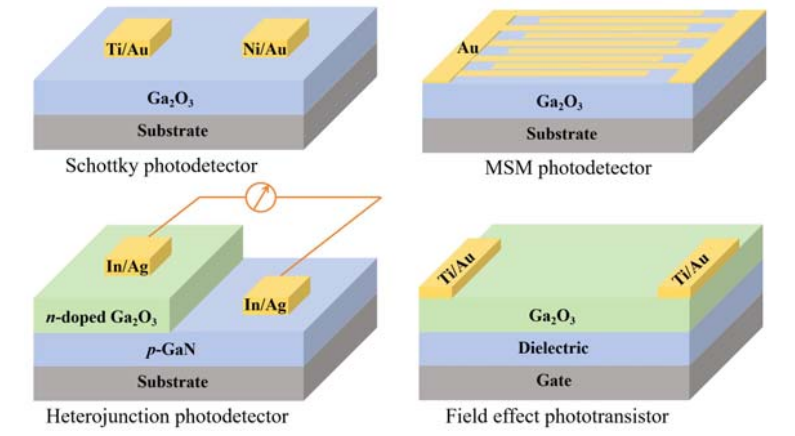
Figure 2. Structure diagrams of different devices based on Ga2O3.
DOI:
doi.org/10.1088/1742-6596/2956/1/012044
